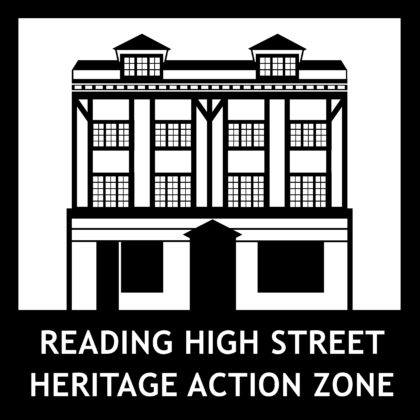In collaboration with the Reading High Street Heritage Action Zone (HSHAZ) which is funded by Historic England and Reading Borough Council, we have digitised the Reading Board of Health maps. But what are they?
In 1850, Reading Borough Corporation was constituted as a Local Board of Health under provisions included in the Public Health Act 1848. It replaced the Paving and Lighting Commissioners, and inherited their responsibilities for public health matters, including the maintenance of streets, public cleanliness, water supply and sewerage, etc. It also incorporated the area of Whitley.
The Board of Health maps were drawn up by the Reading Borough surveyor, John [Berry] Clancy, in 1853 to survey the state of sanitary provision in the town.
There are 29 maps in total which were originally numbered 3-31, but numbers 1-2 are not known to exist. When cataloguing the maps, we gave them the numbers 1 to 29 as follows: R/AS 2/4/1-29.
The original maps are 26 inches x 40.5 inches/650 mm x 960 mm at a scale of 50 feet : 1 inch. They show buildings in block plan annotated with some later developments (c.1870s) as well as names of roads and watercourses. Unfortunately, there is no specific key to the maps, but it is assumed that they would have used similar map conventions to the Tithe maps of the same period. Therefore, pink or red indicates a dwelling house; grey or black indicates other buildings.
Each map shows the detail of sanitary provision in Reading Borough, as surveyed in 1853. The Borough’s boundaries were smaller and so some areas of modern Reading – such as Caversham and Tilehurst – are not shown. Roughly the boundaries are Oxford Road to the west, Reading railway station to the north, London Road to the east, Southampton Street and Whitley Street to the south.
We have created an interactive grid map at the bottom of this page which is based on an Ordnance Survey map of Reading and shows the areas covered by the Board of Health maps. To view a map, simply click on a number in the grid map and it will display the corresponding Board of Health map for that area.
Whilst we have tried to be as accurate as possible with the grid map, some parts may not appear on the displayed map. Therefore, you may need to click on the maps either side, or above and below your chosen area in order to see that section. Just click back to return to the grid map.
We hope you enjoy discovering more about how Reading looked in the 1850s.

If you would like to find out more about Reading’s Heritage Action Zone and what else they have been doing, please see their website for details: https://www.reading.gov.uk/planning/reading-high-streets-heritage-action-zone/
